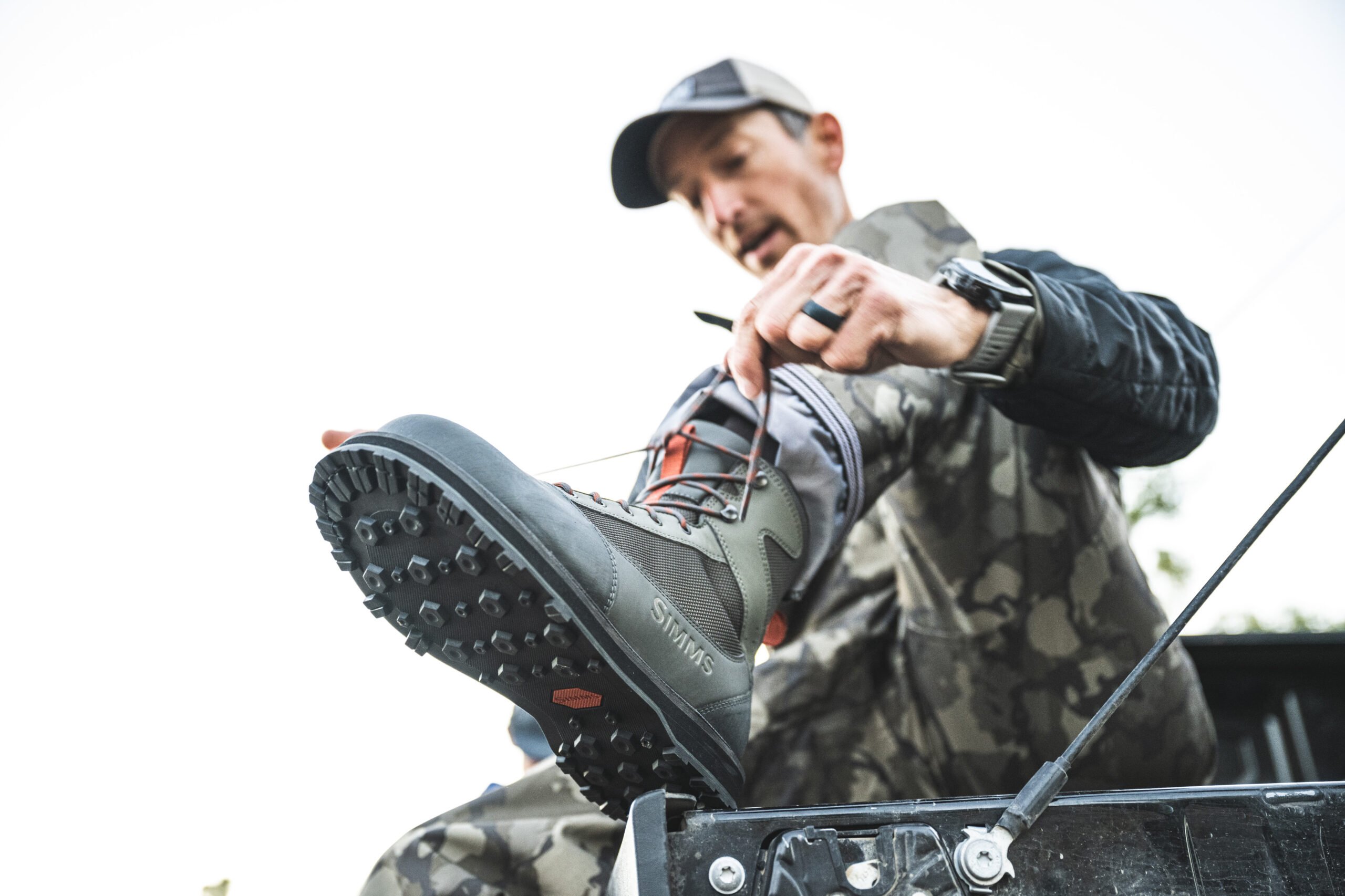
Simms Fishing Products, preeminent manufacturer of waders, outerwear, footwear, and technical fishing apparel launches a platform to give back to multiple conservation groups supporting healthy and sustainable fisheries. The brand has initiated four give-back campaigns on their ecommerce site and are funding NGO partners via a 1% contribution of sales at no cost to the consumer.
Funding generated through this ecommerce platform are in addition to Simms’ ongoing support of key conservation initiatives such as Trout Unlimited’s Gallatin Home Rivers Initiative and Montana Freshwater Partner’s Give Back to the Yellowstone efforts among others.
As an industry leader, supporting healthy and sustainable fisheries has always been a key component of Simms’ mission. This new platform provides a mechanism for Simms to augment their long-standing commitment to protecting and preserving the natural resources the fishing community relies on for recreation, personal fulfillment, and emotional well-being.
“Simms has always been committed to protecting the future of fishing. In addition to advocacy and volunteerism, funding non-profit partners is a key aspect of that conservation approach.” said Strick Walker, Simms CMO. “Giving 1% of our ecommerce sales is a way for us to be transparent, to engage with consumers, and raise awareness for organizations we feel are making a positive impact.”
At checkout on simmsfishing.com, consumers can choose to contribute 1% of their purchase to one of the four campaigns at no additional cost. Each campaign has an associated fundraising goal and, once achieved, the campaign will either start over or be replaced with a new campaign from another 501c non-profit organization selected by Simms. Non-profit organizations and campaigns will rotate throughout the year.
For the initial kickoff, Simms has selected the American Saltwater Guides Association (ASGA), Captains for Clean Waters (CFCW), Trout Unlimited (TU), and the Coastal Cutthroat Coalition (CCC). See details regarding the four organizations and their respective campaigns below.
American Saltwater Guides Association / The Albie Project
The American Saltwater Guides Association is a coalition of forward-thinking guides, small business owners, and like-minded anglers. This collective understands the value of fish in water and recognizes that abundance equals opportunity for all. For inshore light tackle and fly anglers, false albacore (albies) have garnered a cult following throughout the Atlantic coast. An estimated half-million trips leave the dock each year specifically to target these powerful fish. Not only do albies draw significant interest amongst the angling community, they also play a critical role in their respective ecosystem — yet, they are not managed and there is little scientific understanding of the species. ASGA recognizes the value of albies and therefore has implemented an effort to learn more about them with a goal of convincing fishery managers to establish precautionary management for this under-appreciated and overlooked species. In order to gain important scientific data to establish official albie protection, the ASGA is aiming to gain funding for an additional 14 telemetry tags to add to the 100+ tags that have already been deployed. These tags will help track albie migration patterns, spawning habits, and catch-and-release resiliency.
Captains for Clean Waters / The Everglades Restoration Project
Established in 2016, Captains for Clean Waters was started by a couple of fishing guides who had “had enough” of Florida’s poor water management practices. In turn, these practices were having a devastating effect on the estuaries they rely on. The long-term solution to reduce the harmful discharges from Lake Okeechobee and stop compounding the issues that impact Florida’s coasts is Everglades Restoration. The Everglades Restoration Project is a science-based effort that will send more beneficial water south from the lake to the Everglades, thereby significantly reducing the harmful discharges to the coasts. Participants that support this campaign will effectively be funding the removal of toxic algae from South Florida riverways and streams and help CFCW get one step closer to achieving clean water and saving the Everglades.
Coastal Cutthroat Coalition / Genetic Analysis
The patterns of movement for wild cutthroat trout as they transition from periods of marine residency at nearshore beaches to spawning activity in freshwater is poorly understood. Genetic stock assignment for cutthroat trout in south Puget Sound revealed complex marine migrations outside of their natal fjords. Dedicated to the science and management of wild coastal cutthroat trout, the CCC has established a goal to fund the genetic analysis of 100 cutthroat trout in the Pacific Northwest. Through this study, CCC will describe temporal patterns of inter-habitat movements, the role of physical variables such as temperature, salinity and tides play in determining movement patterns, as well as fine scale movement of cutthroat trout in the nearshore marine environments of Washington State with a focus on popular fishing beaches.
Trout Unlimited / Driftless Area Restoration Effort
The unique 24,000 square-mile unglaciated Driftless Area in the heart of the Upper Mississippi River basin is a natural resource treasure. More than 600 coldwater limestone springfed creeks support this world-class trout fishery. In recent decades, conservation practices have helped control erosion on the ridges and hillsides, but streams still bear the scars of degrading land uses. In an effort to recover this unique natural resource, TU launched the DARE, a collaborative effort to restore watersheds, streams, fish, and other species to benefit the environments and local communities of southwest Wisconsin, southeast Minnesota, northeast Iowa, and northwest Illinois. TU’s goals through DARE are to restore watersheds and improve water quality by reducing sediment, to protect and restore habitat for fish and other non-game species, and to provide recreational fishing access to these restored areas.

